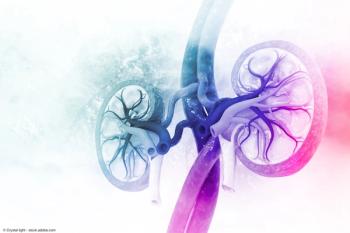
Test may help measure genetic integrity of sperm
Chicago-Two measures derived from an assay being used in research by the U.S. Environmental Protection Agency may add an indicator for the genetic health of sperm to those that already measure sperm count and sperm motility, according to a poster presented at the American Society of Andrology annual meeting here.
Chicago-Two measures derived from an assay being used in research by the U.S. Environmental Protection Agency may add an indicator for the genetic health of sperm to those that already measure sperm count and sperm motility, according to a poster presented at the American Society of Andrology annual meeting here.
The two new endpoints come out of the Sperm Chromatin Structure Assay (SCSA Diagnostics, Inc., Brookings, SD), which is being used in a study of 182 men de-signed to examine the effects of environmental exposures on the male reproductive system. Results from that study are expected out next summer, but preliminary results provide useful information on a second question addressed in the study: whether two endpoints obtained with the SCSA can serve as indicators of the genetic integrity or vulnerability of sperm.
The study marks the first time the percent of high green staining (high DNA stainability or %HDS), determined in the SCSA test, has been compared with a different test already used to indicate sperm with deficient nuclear proteins, known as the chromomycin A3 (CMA3) test. The objective of this first phase of the research was to determine whether the SCSA endpoints correlated with the results of the CMA3 test.
Dr. Perreault and colleagues performed a statistical test to determine whether the %HGS or the CMA3 increases when the %DFI measure increases. If they are not correlated, then the two tests "are telling you two different things," she said.
Comparing %HGS with CMA3 in the 182 men gave a correlation coefficient of 0.610, which is "highly significant statistically, indicating that these two tests are telling you the same thing," Dr. Perreault said.
"On the other hand, the %HDS was not significantly correlated with the %DFI [r=0.038, p=.61]. We believe %HDS and CMA3 both indicate poorly packaged sperm that might be more easily damaged by exposures, while %DFI indicates sperm in which the DNA has already sustained damage," she concluded.
The next step for the new tests is a research use.
"We want to start using these endpoints when studying men exposed to a variety of different chemicals in the environment, with the long-range goal of learning about not only male fertility, but also about the ability of sperm to support a normal pregnancy," Dr. Perreault said. "We'd like to include such tests in any reproductive male study, because they complement the standard measures of sperm counts and motility by adding measures for genetic or nuclear integrity of the sperm."
Newsletter
Stay current with the latest urology news and practice-changing insights — sign up now for the essential updates every urologist needs.


















